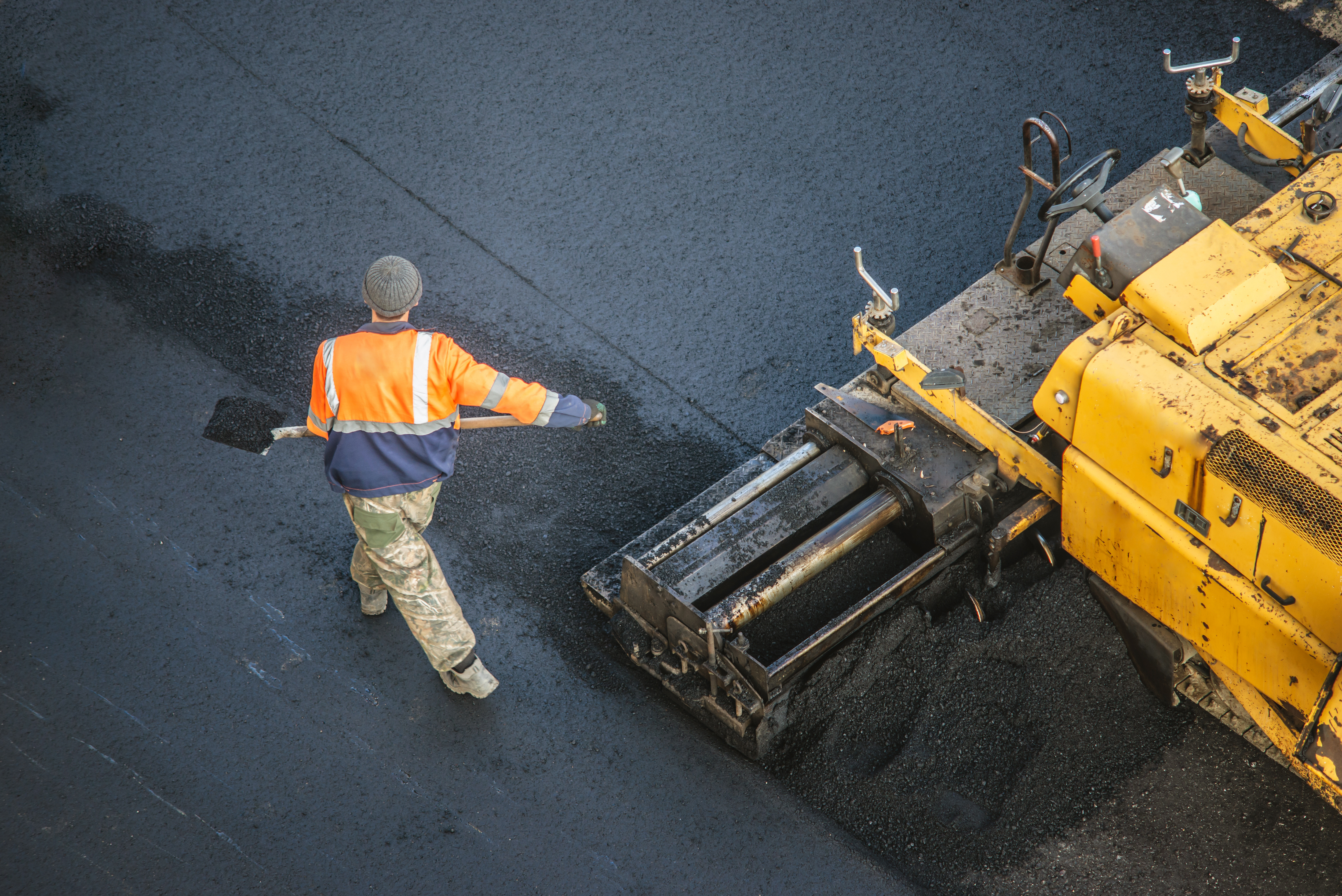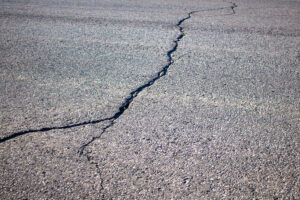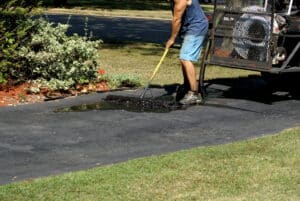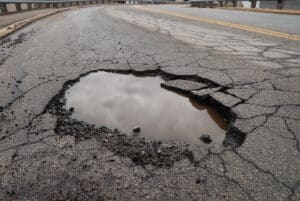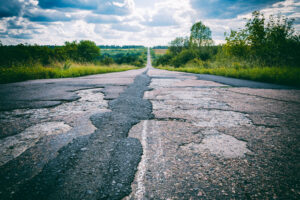Have you noticed cracks, potholes, or wear on your asphalt surface? It’s easy to assume that full replacement is the only way to bring it back to life, but there’s another solution: asphalt resurfacing. This tried-and-true method not only rejuvenates your pavement but also protects it from future damage. In this guide, we’ll explain what asphalt resurfacing is, how it works, and why it’s an excellent choice for property owners like you. We’ll also help you decide when resurfacing is the right solution and share tips for keeping your pavement in top shape after the work is done.
What is Asphalt Resurfacing?
Asphalt resurfacing, also known as an asphalt overlay, is the process of pouring a new layer of asphalt over an existing pavement. This technique is a great choice for when the surface layer is worn down, but the base is still in good condition. Resurfacing is an affordable alternative to a full replacement and extends the life of your asphalt without needing to tear out the old surface.
The primary purpose of resurfacing is to restore the surface’s appearance and integrity. Over time, asphalt naturally deteriorates due to traffic, weather, and age, but resurfacing helps protect it and address issues such as cracks, potholes, and surface wear.
Problems Asphalt Resurfacing Solves
Asphalt resurfacing addresses several common issues that affect aging or damaged asphalt surfaces, including:
- Cracks: Over time, small cracks can develop and expand, leading to water infiltration and further damage. Cracks can come in various forms, such as longitudinal or transverse. Resurfacing seals these cracks and prevents them from becoming bigger problems.
- Potholes: Potholes are usually caused by weather conditions, water damage, or heavy traffic and can be pricey to repair. Resurfacing fills in these holes and smoothes the surface.
- Ruts and Wear: Heavy vehicles can cause ruts or grooves to form on the surface that appear as longitudinal depressions. Resurfacing smooths these out, which improves drainage and stability.
- Surface Aging: Exposure to UV rays and harsh weather can cause the asphalt to fade and lose its durability. Resurfacing brightens the surface’s appearance and restores its protective qualities.
- Alligator Cracking: While alligator cracks usually signal more serious damage, resurfacing can be a temporary solution if the damage isn’t too serious. Resurfacing, in this case, can improve the overall surface condition.
While asphalt resurfacing can solve these troublesome issues, a specific approach is required to achieve the best results.
The Asphalt Resurfacing Process
The resurfacing process involves several key steps; here’s a comprehensive breakdown:
Inspection
Before starting, a thorough inspection is necessary to decide if resurfacing is the right option for you. A contractor will check the condition of the asphalt, looking for deep cracks, large potholes, or underlying structural issues. If the base is compromised, a full replacement is likely the best choice.
Cleaning and Preparation
Once you know that resurfacing is viable, the next step is cleaning. This includes removing debris, dirt, and any loose materials that could interfere with the adhesion of the new asphalt layer. Sometimes, cracks and minor holes are also filled in during this phase.
Crack Sealing
Before adding the new layer of asphalt, it’s also important to fill in the cracks with crack seal to help preserve the integrity of the asphalt and help it last longer.
Milling (Optional)
Milling may be performed if the existing surface is severely damaged or uneven. This involves removing a portion of the old surface to allow for better adhesion of the new asphalt. Milling is not always necessary, but it helps encourage a smoother and more uniform result.
Applying the New Asphalt Layer
Next, the new asphalt layer is applied evenly along the surface. It typically ranges between 1.5 and 3 inches thick, depending on the existing damage and the desired result.
Compaction and Finishing
Once the new asphalt is laid, it is compacted with a roller to eliminate air pockets and create a strong bond with the existing surface. Final touches are also done at this stage, such as smoothing out uneven areas and adjusting the slope for proper drainage.
Drying and Setting
After the resurfacing, the asphalt must fully dry before use. This period usually takes around several hours to a few days, depending on weather conditions. Traffic should be kept off the area during this period to allow the material to harden completely.
By following these steps, you’ll be able to get the most out of your asphalt resurfacing and reap its many benefits.
Benefits of Asphalt Resurfacing
Asphalt resurfacing offers numerous benefits that make it a popular choice for property owners looking to extend the life of their pavement. These benefits include:
Cost-Effectiveness
Compared to a full asphalt replacement, resurfacing is a much more affordable option. The overall cost is much lower since it involves only applying a new layer of asphalt rather than removing and replacing the entire surface.
Quick Turnaround
Asphalt resurfacing is faster than a full replacement. Most resurfacing jobs can be completed in a few days, depending on the size of the area. This quick turnaround means less disruption to your property.
Improved Appearance
Resurfacing gives your asphalt a fresh, clean appearance. Whether it’s a driveway, parking lot, or roadway, resurfacing helps your pavement look as good as new.
Increased Durability
The new layer of asphalt strengthens the surface and provides added protection. This helps the pavement handle heavy traffic, weather conditions, and other stresses.
Environmentally Friendly
Asphalt is one of the most recyclable materials, and resurfacing lets you reuse the old surface. By choosing to resurface, you reduce the need for new materials and minimize the environmental impact of your project.
Higher Property Value
Well-maintained asphalt surfaces can raise the overall value of your property. Resurfacing can improve the appearance and functionality of your driveway, parking lot, or road, potentially increasing its resale value.
Asphalt resurfacing offers many benefits. Through mindful maintenance, property owners can prolong these benefits and get the best value for their projects.
Regular Maintenance After Resurfacing
Regular maintenance is key for your newly resurfaced asphalt to last as long as possible. Consider the following maintenance tips:
- Sealcoating: Applying a sealant every few years helps protect the asphalt from UV rays, moisture, and chemicals. Sealcoating can greatly extend the lifespan of your resurfaced surface.
- Crack Sealing: Over time, new cracks may appear. Sealing them as soon as you notice them will prevent water from infiltrating the surface. This will stop the cracks from worsening.
- Cleaning: Removing debris, leaves, and other materials will help keep your pavement out of harm’s way. Long-term wear can occur if the pavement is left unchecked and ignored.
Maintaining your resurfaced asphalt will help prevent further damage and keep it in top-notch shape.
Let Superior Asphalt Take Care of Your Asphalt Maintenance
By addressing surface issues early and combining resurfacing with proactive maintenance like crack sealing and sealcoating, you can enjoy smooth, long-lasting asphalt for years to come. At Superior Asphalt, we specialize in helping property owners protect their investments with expert repair and maintenance services. Don’t wait for small problems to turn into big headaches. Contact us today for a personalized quote, and let us help you keep your asphalt in excellent condition.

